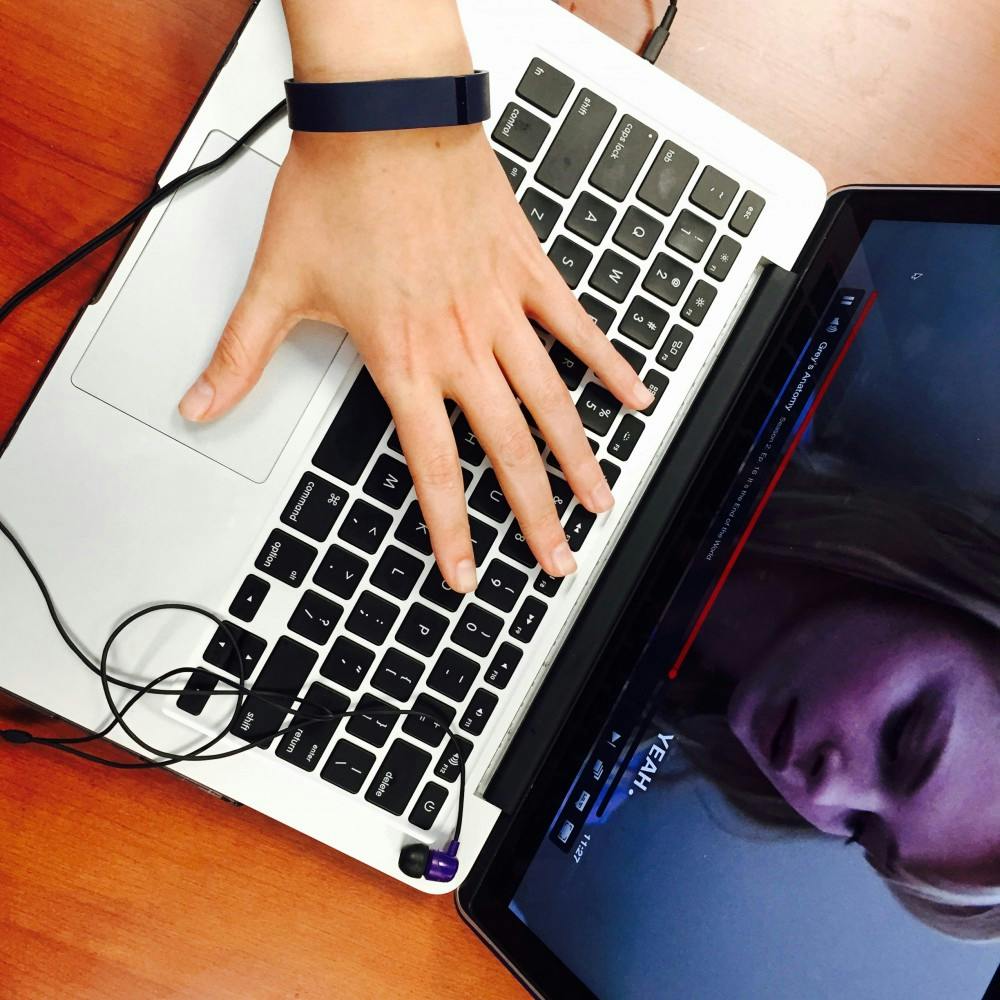Students across the country are using wearable technology to track their steps and access apps from the convenience of their wrist with products like Fibit, Apple Watch and Garmin Vivoactive.
Some universities have taken this appreciation so far as providing the advanced wristbands for students. Oral Roberts University freshmen were all given Fitbits to track their health and promote fitness.
At Elon University, the activity trackers can be seen on the wrists of many students, but to a lesser extent, simply being used to track steps and activity.
“I don’t know if it’s a health thing or a fad,” said junior Haley Ghelfi, who wears a Garmin Vivoactive watch. “I know people who don’t exercise at all, but they have a Fitbit because they like hitting their 10,000 steps.”
Connecting and disconnecting
Ghelfi got her tracker as a gift for her birthday because she enjoys running. Usually, she only uses it for tracking the length of her runs, reaching her step goal — which will change depending how much she walked the previous day — and the watch function.
The Garmin also has the option to sync to her phone to receive calls and notifications from other applications, but Ghelfi turned this function off because it drained her phone battery. She did, though, like the ability to have access to notifications without having a phone on her.
Though she doesn’t utilize all the functions on her watch, Ghelfi loves the advanced tracking technology.
“It’s fun to keep track of that sort of things,” Ghelfi said. “It’s convenient. It’s also accessible and functional as a watch.”
For the most part, Ghelfi hasn’t noticed too many students with advanced watches like hers, which she thinks is because they are expensive and have the same basic function as a cell phone.
According to Michael Vaughn, instructional technologist, there is a large push for design with wearable technology, particularly with the Apple Watch, which was presented as a more of a fashion accessory. The product also took advantage of the fitness market that Fitbit already set up
Staci Saltz, lecturer in communications, has found a way to incorporate the Apple Watch into her daily life and actually disconnect herself from technology more so than before wearing it.
Originally, Saltz thought her purchase was frivolous, considering she had her phone on her most of the time, but it has been proven to be quite beneficial.
“I think it’s a bit of a niche product,” Vaughn said. “I’m not sure a smart watch is for everybody, but if you do get a lot of notifications and have an active fitness routine, I think you would really enjoy it.”
One of the main factors that convinced Saltz to buy the watch is that it connects to all her Apple devices. This allows her to see her calendar and text messages as well as answer calls without having to pull out her phone.
“I don’t like having my phone out a lot,” Saltz said. “I think it’s disruptive to the environment. I think its kind of disrespectful to the people I’m around. Since its wearable it’s not disruptive. I can look at my watch really quickly and see if I have a notification.”
If she’s teaching a class or in a meeting, Saltz can quickly look at her wrist to check a text or email without disturbing anyone — if it’s important, she’ll then leave the room to respond.
Usually, when Saltz is looking on her phone for a text, she gets sucked into checking her other social media accounts. But with the Apple Watch this temptation doesn’t exist.
“I could live without [an Apple Watch], absolutely,” Saltz said. “I feel connected. So if someone’s trying to get a hold of me, I’m not disconnected and I don’t have to pull my phone out.”
Making use of the data
In addition to using his Apple Watch for checking his notifications with a light tap on his wrist, Vaughn also utilizes the fitness features daily. He particularly enjoys watching using the Activity App and watching his exercise, move and stand circles fill up through out each day.
Vaughn can then go back and see how long his streak has been. It’s that addiction and visualization that tend to make these expensive, not completely necessary gadgets so popular.
“It’s that quantification of self,” Vaughn said. “People just want to quantify things about their day that they’re doing because there’s something cool about it. Being able to say I walked over 10,000 steps today, that’s pretty cool.”
Though fitness bands and smart watches are most common, there are other products such as smart socks that measures how a foot hits the ground and smart belts that say when you’ve eaten too much. Additionally, Vaughn said there are more experimental products that will become more popular in 10 or 15 years.
For example, the Microsoft HoloLens creates holograms to interact with content and an Israeli company called Deep Optics are developing omnifocal glasses with self focusing lenses.
But without utilizing the data created by these wearable devices, they essentially become useless. According to Vaughn, most Fitbit users stop after four months because they don’t see the results they want.
“If you don’t research it and learn what it can do, it doesn’t end up having as many benefits,” Saltz said. “I haven’t spent the time to learn everything [the Apple Watch] can do, but I’ve figured out how it fits into my life even on the most simple level.”


